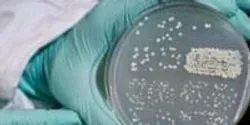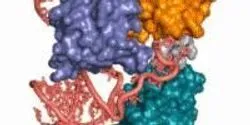RNA

Scientists at Albert Einstein College of Medicine of Yeshiva University and their international collaborators have developed a novel fluorescence microscopy technique that for the first time shows where and when proteins are produced. The technique allows researchers to directly observe individual messenger RNA molecules (mRNAs) as they are translated into proteins in living cells. The technique, carried out in living human cells and fruit flies, should help reveal how irregularities in protein synthesis contribute to developmental abnormalities and human disease processes including those involved in Alzheimer’s disease and other memory-related disorders. The research will be published the March 20 edition of Science.

UCLA researchers devise new method to identify disease markers, a key step toward personalized medicine.

Ribonucleotides, units of RNA, can become embedded in genomic DNA during processes such as DNA replication and repair, affecting the stability of the genome by contributing to DNA fragility and mutability. Scientists have known about the presence of ribonucleotides in DNA, but until now had not been able to determine exactly what they are and where they are located in the DNA sequences.

Open any introductory biology textbook and one of the first things you’ll learn is that our DNA spells out the instructions for making proteins, tiny machines that do much of the work in our body’s cells. Results from a study published on Jan. 2 in Science defy textbook science, showing for the first time that the building blocks of a protein, called amino acids, can be assembled without blueprints – DNA and an intermediate template called messenger RNA (mRNA). A team of researchers has observed a case in which another protein specifies which amino acids are added.

Damaged messenger RNA can jam cellular machines that make protein. The failure to clear the jams and chew up bad messengers is associated with neurodegenerative diseases such as Alzheimer’s.

The ability to accurately repair DNA damaged by spontaneous errors, oxidation or mutagens is crucial to the survival of cells. This repair is normally accomplished by using an identical or homologous intact sequence of DNA, but scientists have now shown that RNA produced within cells of a common budding yeast can serve as a template for repairing the most devastating DNA damage – a break in both strands of a DNA helix.

Merck Millipore, the Life Science division of Merck, today (June 17) launched Simplicon™ RNA Reprogramming Technology, which uses synthetic self-replicating RNA to create large numbers of human induced pluripotent stem cells (iPSCs) using a single transfection step. This efficient reprogramming of somatic cells is accomplished without viral intermediates or host genome integration, offering a more defined and safer system for iPSC generation.










